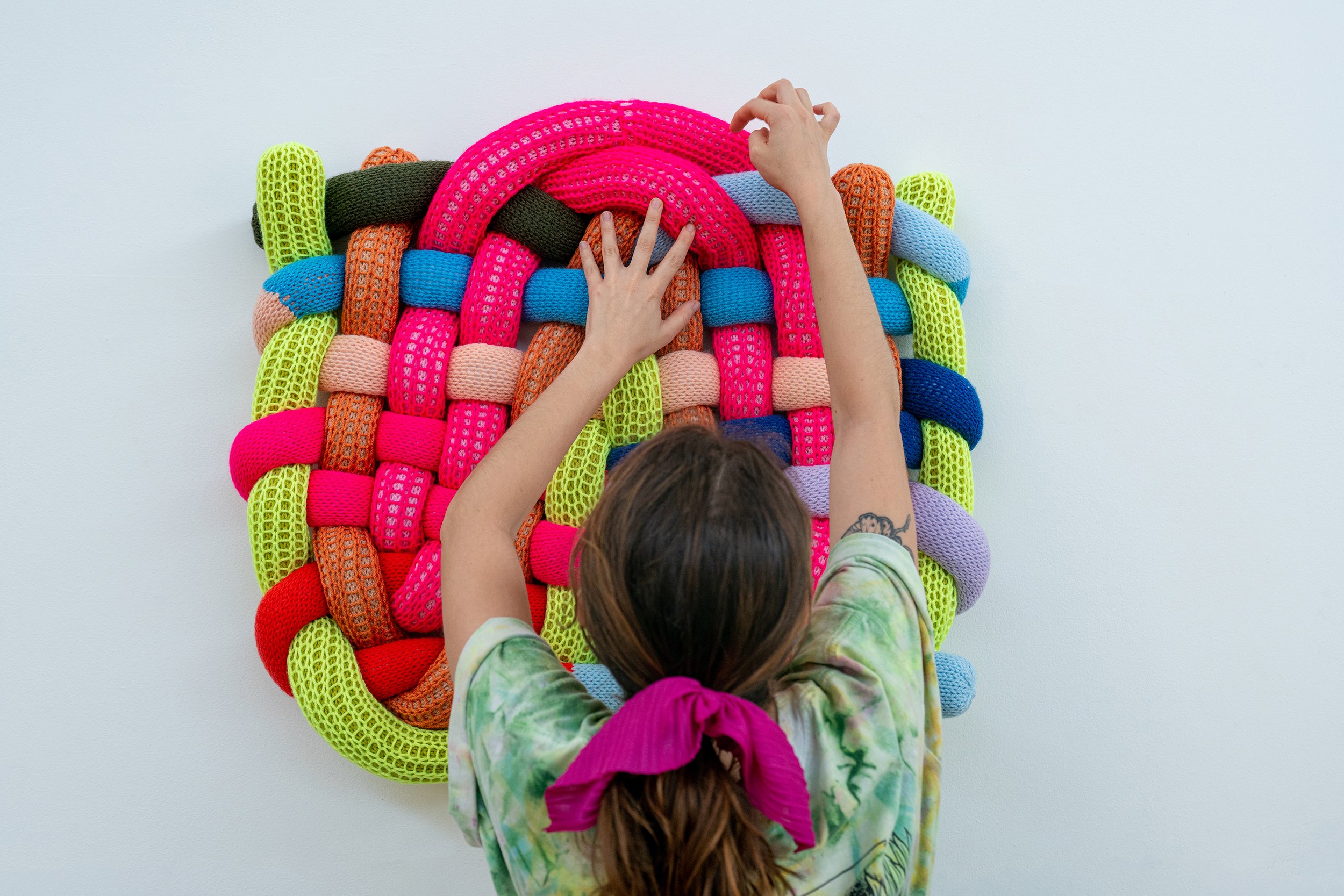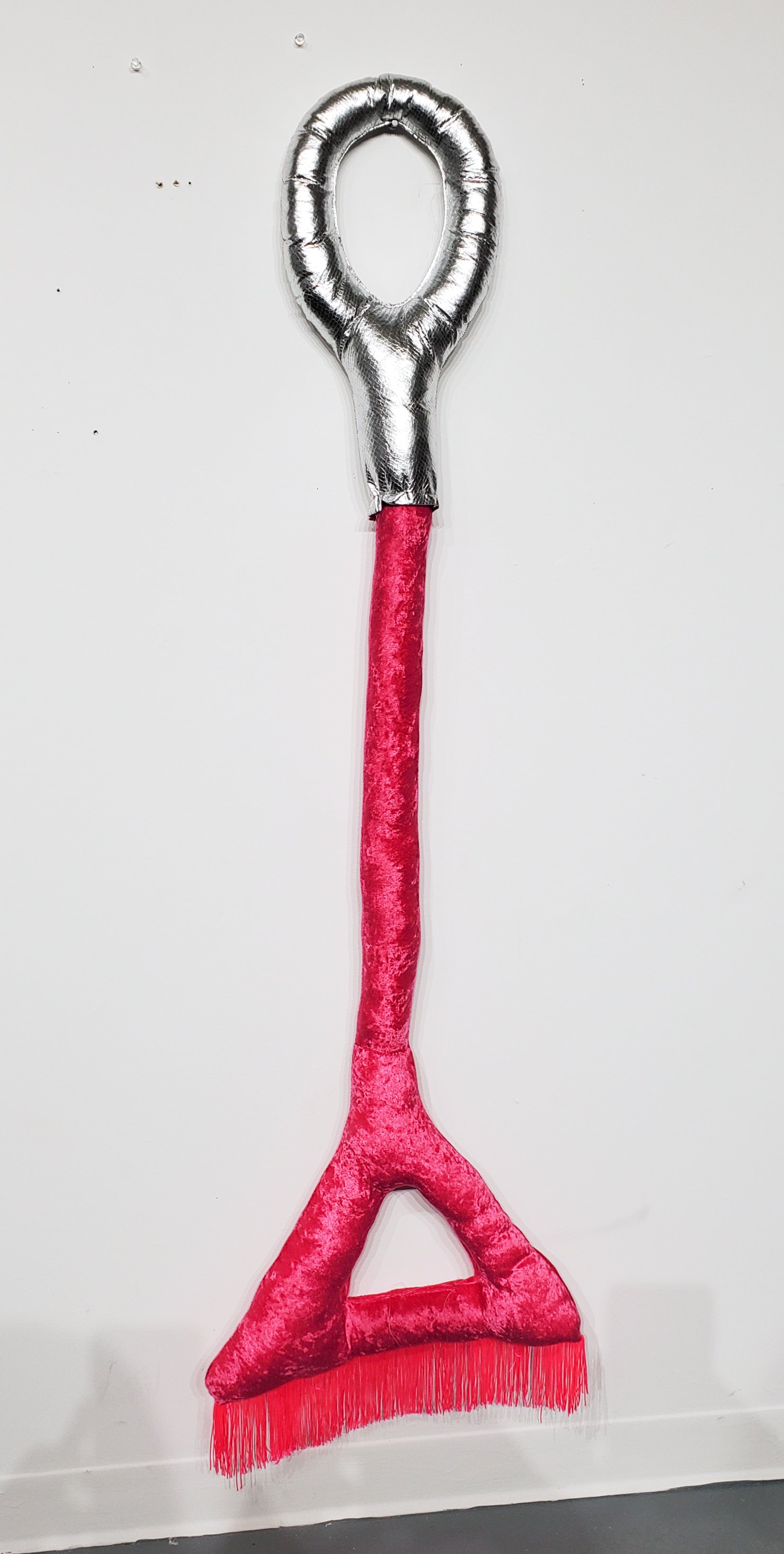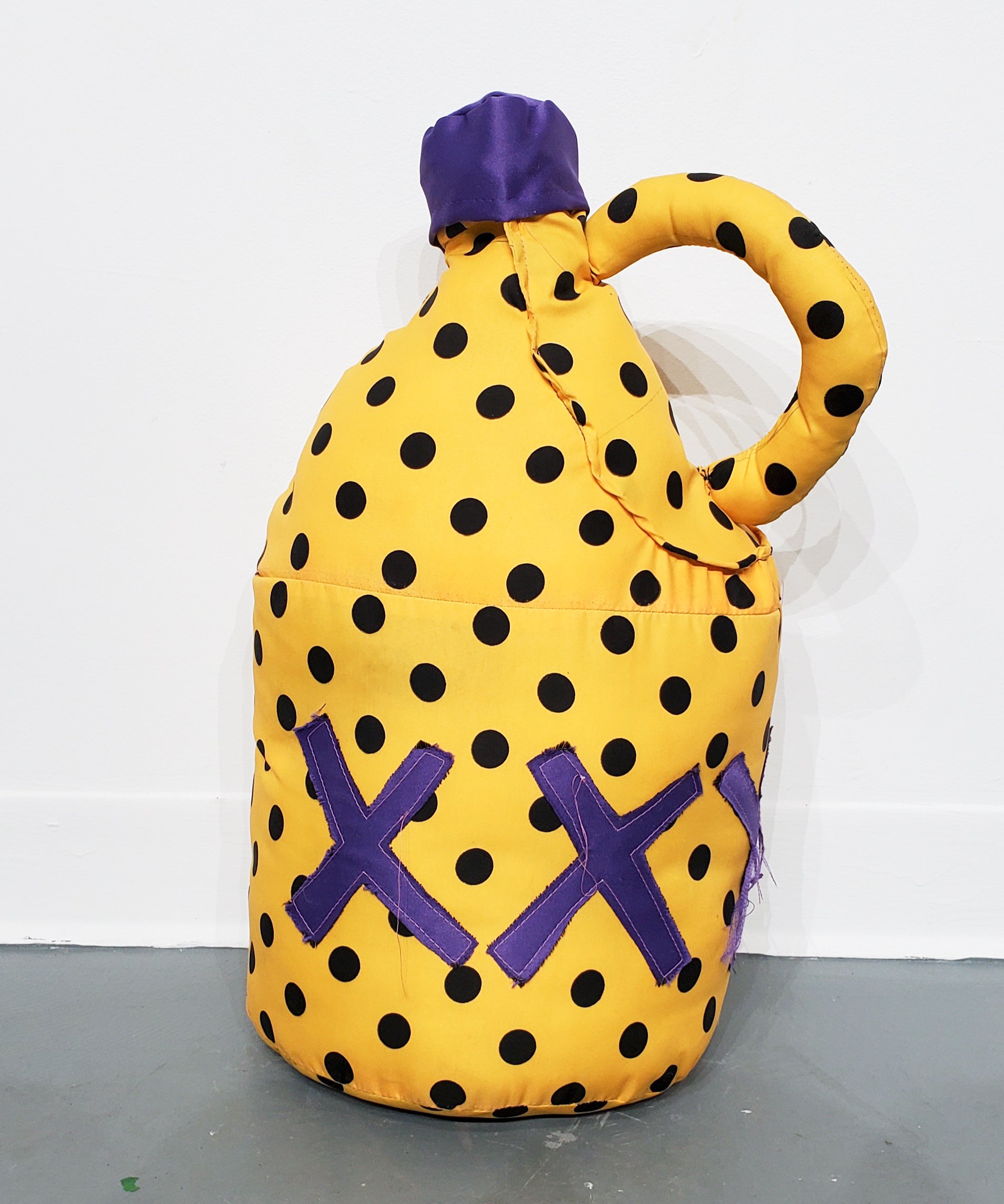Katrina Sánchez
May 31 - July 16, 2023
Installation view: Mending Joy
Abigail Ogilvy Gallery proudly presents Mending Joy, the gallery’s first solo exhibition by fiber artist Katrina Sánchez. In the exhibition, Sánchez explores themes of joy, repair, and responsive choice through her signature tactile “magnified weavings” Mending Joy is a labor of love in which Sánchez has given herself time and space to prioritize finding joy despite past experiences and trauma related to the current political climate. Through this new body of artwork, she has given herself space physically to explore new concepts, textures, colorways, and visual language. The result is monumental, playful, interactive, and restorative.
The artwork on view emphasizes Sánchez’s embrace of power through choice. Vibrant weavings hang from the ceiling, walls, and dot the floors, set against a saturated wall gradient to fully encapsulate the viewer in an intentional unification of subject and canvas. Lush greens and neon pinks pull influence directly from the rainforests of Sánchez’s native Panama. Looking closely at the variation in knit structures, the viewer experiences a cadence of breath as the knit stitches open and close, imparting a sense of vitality on the entire room. In her new series of “poufs,” Sánchez offers a seat to the viewer, allowing an experience of strength and energy passed through these objects. The poufs have a liveliness to them, growing up from the ground and accelerating the artist’s intention of engaging a three-dimensional space through soft sculpture. While the magnified weavings are dimensional, the poufs push color and texture even further into space. These spheres of joy are made to be fun, pleasant, and functional; unique pieces that challenge the concept of traditional furniture.
Katrina Sánchez, Escalando Montañas, 2023. Knitted yarn, fiberfill. 42 x 80 in. Image courtesy of Da Nam.
The large magnified weavings on the walls and ceilings offer the viewer a sensory effect of playful confrontation: often the size of humans or larger, it is impossible to avoid interacting with them. Her current body of work is deeply influenced by her early small-scale fiber works, which involved mending clothing by weaving with needle and thread as a restorative practice to process lived experiences and trauma, including the aftermath of a school campus mass shooting. Sánchez considers stress and trauma to be universally shared experiences, as we all go through events that deeply challenge us. Her ambition with her work is to share playful, tactile works that offer optimism to viewers. Sánchez works with scale, texture, color, and touch to explore emotion and the relationships between our physical environments and ourselves.
Katrina Sánchez, Mending Joy, 2023. Knitted yarn, fiberfill. 25 x 30 in. Image courtesy of Da Nam.
Smaller weavings offer a platform for invention, where Sánchez experiments with new textures. Her newest mohair weavings seem to vibrate from across the room, looking hazy and grandly soft, tender and weightless. In a conscious effort to engage with a more sustainable material, a loose knit encapsulates a new type of filling: upcycled clothing. A closer inspection achieves a more intimate exchange as the artist allows visitors to physically engage with the work through the sense of touch.“I really enjoy when people can touch the Magnified Weavings I make,” says Sánchez, “sometimes, some spaces insist that people refrain from touching any of the artwork, but it’s often one of the first things I hear from people, ‘I just want to touch it!’ and I think it is really satisfying when they can. It's fulfilling that curiosity, sense of play and tactility. That for me is important for the work; letting the viewer indulge in that desire to feel and explore the work through another sense. It also breaks a barrier between myself as the artist with the viewer by enabling them to experience the work in a way like I do. The work is plush and flexible, it gets pushed and pulled and even sat on in the studio and it’s not very fragile so I feel like, why safeguard that experience for only myself or some people?”
Katrina Sánchez (b. 1995, Panama City, Panama) received a BA in Spanish-Hispanic Studies and a BFA in Fibers from the University of North Carolina (Charlotte). She exhibited her artwork at Spring Break Art Show LA (2022). She has exhibited her work most recently at venues such as bG Gallery (Santa Monica), Abigail Ogilvy Gallery (Boston), Goodyear Arts (Charlotte, NC), SOCO Gallery (Charlotte, NA), and the Mint Museum Randolph. Her work has been reviewed by Untitled Magazine, Artnet News, Hyperallergic, Art and Cake, and Whitewall Art. Sánchez lives and works in Charlotte, NC.





